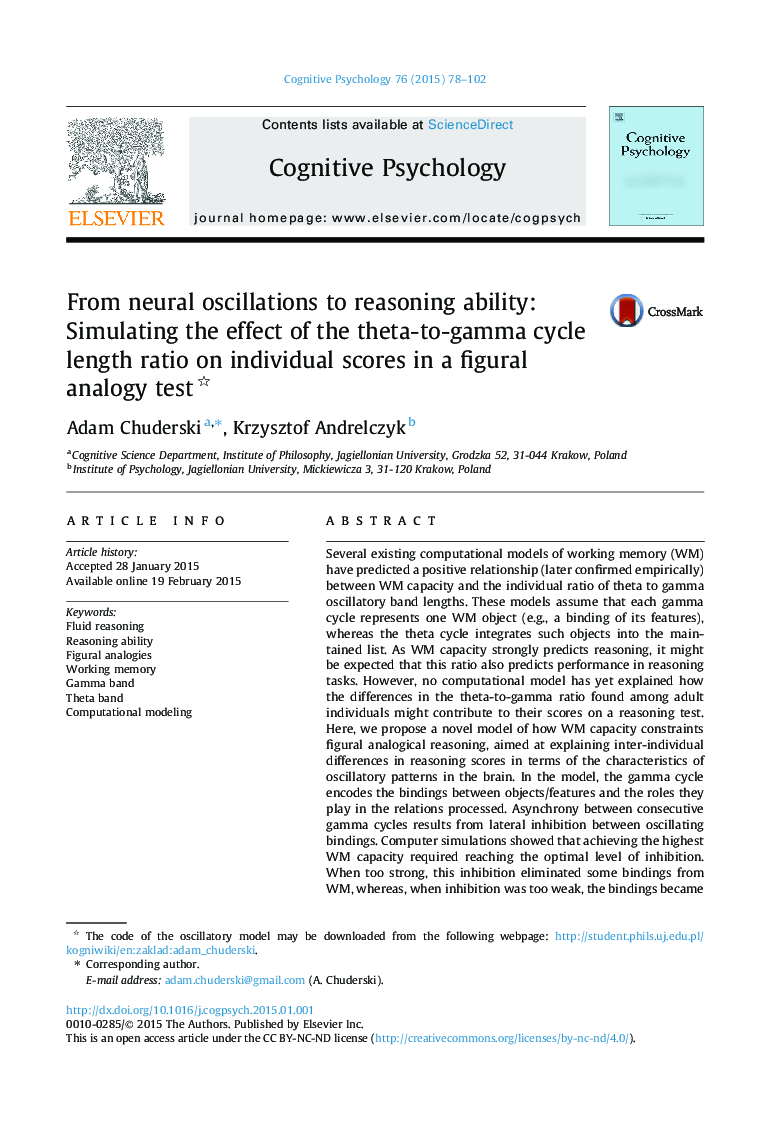| کد مقاله | کد نشریه | سال انتشار | مقاله انگلیسی | نسخه تمام متن |
|---|---|---|---|---|
| 916835 | 1473388 | 2015 | 25 صفحه PDF | دانلود رایگان |
• An analogy-making model is based on asynchronous role-filler bindings oscillations.
• The model fits the distribution of scores and patterns of errors in an analogy test.
• Individual variation in analogy-making is explained in terms of lateral inhibition.
• The pattern of oscillatory activity strongly predicts performance of the model.
Several existing computational models of working memory (WM) have predicted a positive relationship (later confirmed empirically) between WM capacity and the individual ratio of theta to gamma oscillatory band lengths. These models assume that each gamma cycle represents one WM object (e.g., a binding of its features), whereas the theta cycle integrates such objects into the maintained list. As WM capacity strongly predicts reasoning, it might be expected that this ratio also predicts performance in reasoning tasks. However, no computational model has yet explained how the differences in the theta-to-gamma ratio found among adult individuals might contribute to their scores on a reasoning test. Here, we propose a novel model of how WM capacity constraints figural analogical reasoning, aimed at explaining inter-individual differences in reasoning scores in terms of the characteristics of oscillatory patterns in the brain. In the model, the gamma cycle encodes the bindings between objects/features and the roles they play in the relations processed. Asynchrony between consecutive gamma cycles results from lateral inhibition between oscillating bindings. Computer simulations showed that achieving the highest WM capacity required reaching the optimal level of inhibition. When too strong, this inhibition eliminated some bindings from WM, whereas, when inhibition was too weak, the bindings became unstable and fell apart or became improperly grouped. The model aptly replicated several empirical effects and the distribution of individual scores, as well as the patterns of correlations found in the 100-people sample attempting the same reasoning task. Most importantly, the model’s reasoning performance strongly depended on its theta-to-gamma ratio in same way as the performance of human participants depended on their WM capacity. The data suggest that proper regulation of oscillations in the theta and gamma bands may be crucial for both high WM capacity and effective complex cognition.
Journal: Cognitive Psychology - Volume 76, February 2015, Pages 78–102
